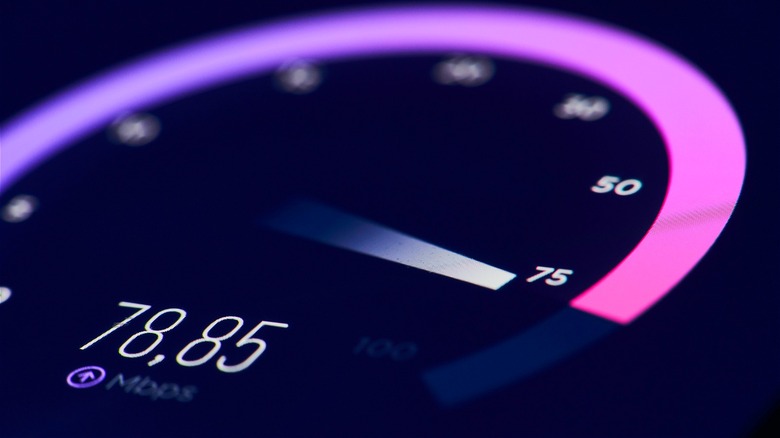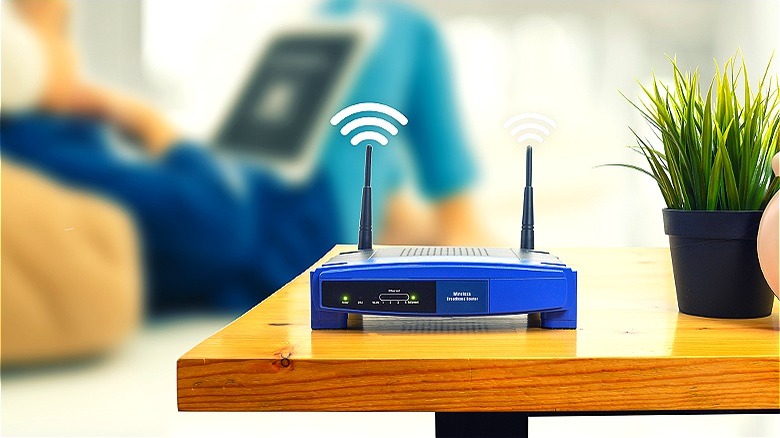How Much Should You Really Pay For High-Speed Internet?
For modern consumers, having a reliable and reasonably quick internet connection is indispensable. Besides shopping, streaming entertainment, and keeping in touch with loved ones, many Americans also require internet service to work from home. While there might not be much choice as to which vendors provide utilities like water and electricity (learn tips on saving money on your electric bill here), urban dwellers typically have multiple internet service providers (ISPs) to consider. With that in mind, how much does the average American pay for high-speed internet, anyway? After all, you don't want to learn that you're overpaying.
The range of monthly fees for internet service is fairly large. At the low end is a company called Astound, which promotes a $20-per-month package with download speeds up to 300 Mbps (megabits per second). If that sounds too good to be true, know that the $20 introductory rate will eventually rise, and it's also subject to taxes and fees that'll result in a higher final cost. Also, Astound only offers service in about a dozen states at this time.
On the other end of the high-speed-internet spectrum is Xfinity's Gigabit Pro plan, which costs a whopping $299.95 a month. For that lofty monthly sum, users receive a fiber optic service with some of the fastest speeds anywhere. Both downloads and uploads are accomplished at up to 6,000 Mbps (or six gigs). Content creators, live-streamers, and households with many simultaneous users may appreciate the blazing speed, but it's probably overkill for most folks. (Also note this service isn't available for every home; Xfinity would need to carry out a site survey to confirm serviceability.)
Avoid renting equipment from your ISP
Disregarding the two extremes mentioned of $20/month and $300/month for high-speed internet, know that the average American pays approximately $70 per month for this utility service based on a consensus from multiple sources. If you're interested in lowering your monthly expenditure even further, there are a few strategies to consider.
The first cost-saving measure is to purchase our own equipment, such as a modem and wireless router. Some internet plans may include a modem for free, but most don't. If you're paying several dollars per month or more to rent equipment, consider buying it yourself instead. After a year or so, you'll have recovered your initial outlay and start saving every month thereafter. Your particular internet provider can provide a list detailing the devices compatible with its service.
Another common pitfall is paying for more internet speed than you actually need. Here, consider your household and how many people will realistically be online at the same time and what they'll be using it for. You might be surprised to learn that streaming services like Netflix or YouTube TV (is it really worth the price?) will function with speeds as low as one to three Mbps. That said, the FCC recently raised its recommended minimum speed to 100 Mbps to account for modern lifestyles that are more internet-heavy. Indeed, 100 Mbps is probably a good benchmark for most households.
Negotiate after a promo ends
The type of broadband service you select will also have an effect on both internet speed and price structure. Digital subscriber lines (or DSL) is fairly old technology and often requires a telephone line to function, but it may be an economical alternative if it's still available in your living area. Next up is cable internet, which uses a coaxial cable of the type used for cable television. Cable internet, like Xfinity and Spectrum, is a common form of service nowadays (available to over 80% of U.S. households) and is on the more affordable end of the scale.
The pinnacle of wired high-speed internet service is fiber optics, however, which is usually both faster and more expensive than cable or DSL, though it's not available everywhere in every corner of the nation yet. Residents of remote areas, meanwhile, will probably need to investigate getting their internet via either satellite or a 5G wireless connection. While neither is particularly fast or cheap, they may be a necessary evil for folks living in rural areas.
One final tip with regard to what happens when a promotional rate ends, like when a $69 monthly high-speed internet bill balloons to $99 per month after 12 months. When it ends, it's worth calling your internet service provider to try to politely negotiate a lower rate or perhaps get enrolled in a new promotional scheme. Considerable competition exists between ISPs and yours might be willing to work with your budget to avoid losing a customer. (On that note, check out more frugal tips for saving money without sacrificing quality of life.)


